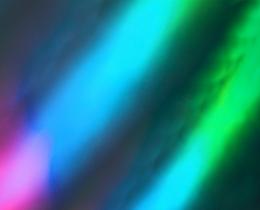Words to describe the subtle life force that animates us—like prana and qi—have been around for thousands of years. These terms are only recently becoming common in our Western vernacular and can be difficult to translate. Like a cool breeze or the warmth of a fire, prana and qi are perhaps more easily understood when felt and experienced.
Modern science suggests the world is made of matter and energy. Matter is anything that takes up space. Energy is the ability to move matter or do work. Understanding what energy is and how it moves in the body can offer practical benefits in your daily life.
Think about a time when you felt a dip in your ability to get things done. You might have said, "I just don't have the energy." Instead of reaching for a cup of coffee or a chocolate bar, you could instead cultivate and harvest your inner sources of energy through various exercises.
Or think of a time you felt a sudden burst of high energy and didn't know what to do with yourself. What if you could harness that energy, distribute it throughout your body, and use it to your advantage?
Understanding prana and qi makes it possible to learn to "manage" your energy.
Defining Prana & Qi
Prana and qi are terms that originate from different ancient traditions, but both describe the subtle energy that is found in everyone and gives us our vitality.
Prana (prah-nah) [Sanskrit], in Ayurvedic tradition, is defined as the life force or vital energy that permeates the body and is especially concentrated along the midline in centers called the chakras. Pranayama is mentioned in verse 4.29 of the Bhagavad Gita, which has been dated to between the fifth and second century B.C.E.
Qi (che) [Chinese] is defined as one of the most basic substances that, according to traditional Chinese medicine, pervades the body. It is a subtle influence or vital energy that is cause of most physiological processes and whose proper balance is necessary for maintaining health. Qi is also spelled chi, ch'i, and ki. The earliest representation of the Chinese character for qi is on a jade artifact dated from 481-221 B.C.E.
Working With Prana
Energy flows through the body in the same way electricity flows through a network of wires. In his book Light on Yoga, B.K.S. Iyengar describes the nadis and chakras, the components of the energetic network of the body.
He describes a nadi as a tubular channel through which energy flows (imagine a black hole or a pipe), and chakras as circles or wheels of energy located primarily near vital organs. Activities like yoga help to balance the flow of prana through these channels.
Pranayama, or rhythmic control of the breath, is a common yogic practice involving various breathing techniques to manage and control prana. Though pranayama is sometimes thought of as just breathing practices, it is more that that. As prana is life itself, these practices offer the opportunity to understand and control the subtle energy of your being.
Practicing Qi
In The Master Key, qigong teacher Robert Peng describes qi as “an invisible but discernible type of energy that permeates our bodies, much like an electromagnetic field, and powers our vital functions." He continues, "We all have both high energy days and low energy days and the difference between them depends on the quality of our qi."
Qigong is an ancient Chinese practice that is generally translated as "cultivating energy," according to the National Qigong Association. The practice includes physical postures, breathing techniques, and focused intention. From the gentle movements of tai chi to the more vigorous kung fu, the aim of qigong (and related practices like tai chi) is to cultivate qi to harmonize the mind, body, and spirit.
Roger Jahnke, qigong teacher and doctor of Chinese medicine, writes in his book The Healer Within, "All the necessary biological components of self-healing have existed for thousands of years. Both ancient and contemporary philosophers have pointed to it. Science has now confirmed it. The most profound healer is within us—we produce our own internal medicine. It is easy to turn this medicine on, and it is absolutely free. When people learn about the healer within, and then take action to care for their own physical, mental, emotional, and spiritual health, they are transformed.”







